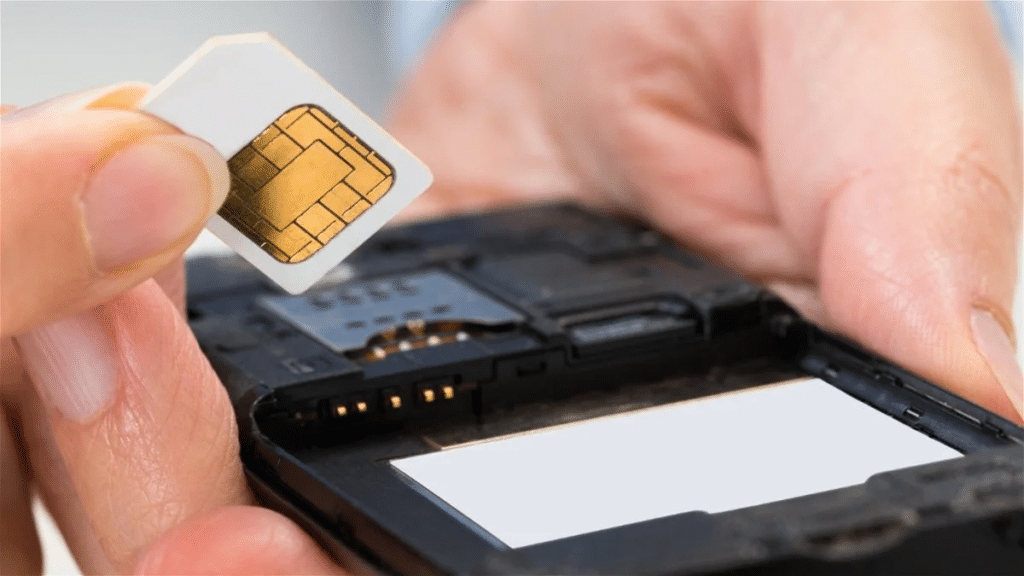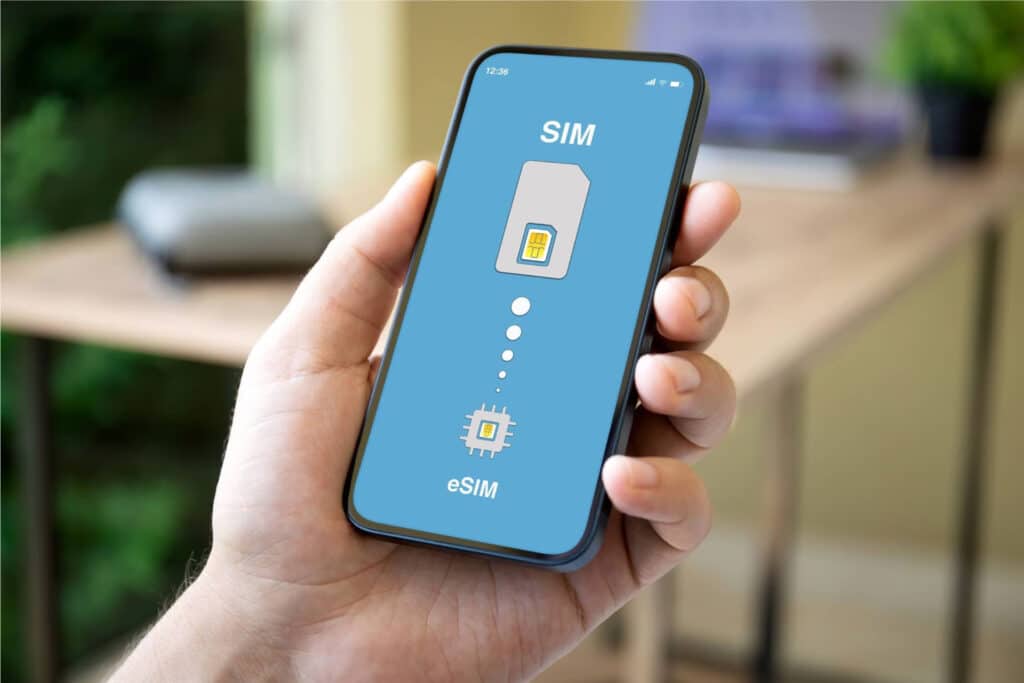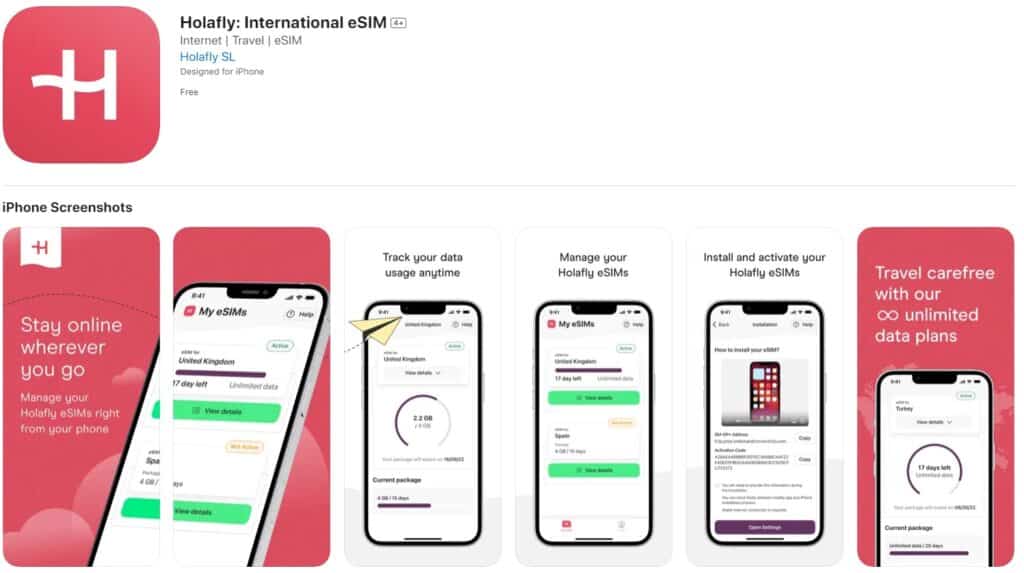eSIM vs physical SIM, which is the best?
Here you’ll find everything you need to know to decide which of these options to use to connect to the internet, eSIM vs SIM.


 +1M
+1M
Holafly saves you +30% compared to other roaming fees
Plans that may interest you
In today’s increasingly connected world, it’s essential to have a fast and reliable internet connection while traveling. Digital nomads and frequent travelers often face the decision of choosing between an eSIM and a physical SIM. What is the best option for you? This post will explore the difference between an eSIM vs. physical SIM card. We will talk about the pros and cons of each one, how to buy and activate them, and tips for choosing the most suitable option.
International eSIM
Buy an International data eSIM for travel with 5% OFF. Code: MYESIMNOW5
What is a physical SIM card?

Physical SIM cards are small chips inserted into a cellular device, such as a smartphone or tablet, to connect to a cellular network, along with talk time and data services. SIM cards contain identification and authentication information that allows the network to recognize the device and the user. The information is stored on a microchip inside the SIM cards and is protected with a PIN code to prevent unauthorized access.
One of the main advantages of SIM cards is its wide availability and compatibility with most cellular devices worldwide. Physical SIM cards are easy to purchase and can be found at electronics stores, cellular network operators, and online. In addition, they offer a variety of data and voice plans that can fit your needs quickly.
However, there are several disadvantages. One is that buying and activating them can be tiresome and slow. Also, changing your SIM card from one country to another can be a problem if you travel frequently. Another disadvantage is that the physical SIM card is subject to damage, theft, or loss, so that you could lose the information stored there.
What is an eSIM?

eSIM is a new digital SIM technology that eliminates the need for physical activation to have a cellular network connection. The main difference between an eSIM and a physical SIM is that the identification and authentication information is stored in a chip embedded in the device. This technology lets users download plans from mobile operators directly to the eSIM capable phone without changing chips whenever a new service is used.
One of the main advantages of eSIM over traditional SIM card is its convenience. The setup of the eSIM is straightforward. Also, users can change cellular operators without waiting for a new SIM card to arrive. Additionally, the eSIM has no risk of damage, theft, or loss, which means that the data stored on it is protected and safe. However, one of the downsides to the eSIM is that it is not yet widely available on all cellular devices and in all countries.
For those interested in eSIM, a suitable option is the Holafly store. This provider offers eSIMs for various destinations around the world. By choosing Holafly, travelers can save time and money by avoiding international roaming costs and having the flexibility to select custom voice and mobile data plans.
What are the benefits of eSIM over physical SIM?
Whenever technology advances, it does so to make our lives easier, and the same thing happens with virtual SIM cards. We will see briefly how they improve compared to physical SIM cards.
| eSIM | Physical SIM | |
| Size | Virtual | Physical |
| Change of provider | Easy | Requires physical change |
| Devices | Increasingly compatible | Widely compatible |
| Multiple profiles | Possible | Not possible |
| Security | Completely secure | Can be physically removed |
| Shelf life | Cannot be damaged, lost, or lost | It is a physical chip that is exposed to any damage or loss. |
| Activation | Quick and easy activation, entirely online and even through a mobile App | Activation through a physical store or online, may require visiting a provider’s store |
While using eSIM offers many attractive advantages, there are also some disadvantages that users should consider before making the switch. Sometimes, the data and voice plans available through the eSIM may be more expensive than those available through a physical SIM card. You must remember that to use international SIM cards or eSIM, you must have an unlocked phone.
eSIM capable phone VS SIM phone
More and more cellular devices offer embedded SIM card compatibility. Among the most popular devices that support eSIM are the latest iPhone models, Samsung Galaxy, Google Pixel, and the Apple Watch and Samsung Galaxy smartwatches. On the other hand, almost all phones on the market have a physical SIM slot.
Compared to devices that only support a physical SIM card, the list of eSIM-compatible devices is still growing. But it is expected that shortly, many more carriers and most phones will move to eSIM technology.
Do you want to know the complete list of eSIM compatible devices? We recommend visiting the manufacturer’s or cellular network operator’s website. You can also find an up-to-date list of eSIM-compatible devices here.
How to activate an eSIM?
Activate an eSIM is a relatively simple process. First of all, users must ensure that they have a compatible phone. After this, you must choose a provider or operator that has an eSIM service available and request one for you. You may also be asked to confirm that you have a capable phone or install a mobile app for activation.
Usually, you can do the activation yourself with a QR code. However, some operators require you to go to a physical store because they do the installation. In any case, when you have the QR code, you just need to go to your phone’s configuration and follow the steps that it indicates.
On an Android phone, you must
- Go to settings > Connections
- Login to SIM Card Manager
- Select Add Mobile Plan, and Now you will see the SIM cards already on your device.
- Press Add Plan using the QR code
- Read the QR code with your camera
- Add it to your cell phone. Your phone will find it and agree to add it to the download.
- Verification. Your new eSIM will be added to the SIM Card Manager.
On iPhone, you must:
- Go to settings, then to Mobile/Cellular data, Add eSIM, and use QR code:
- Position the QR code from your carrier in the camera frame.
- Scan the QR code.
- When the Cellular Plan Detection notification appears, tap Continue.
- Choose the cellular line you want to use as the primary line.
- Select the line you will use for cellular data.
- You will see your eSIM ready to use in the settings.
Where to buy an eSIM online

Buying an embedded SIM online may seem complicated, but it’s pretty simple. Many local providers in each country offer eSIM in their physical stores, and some even offer online purchases. However, it’s important to note that eSIM availability may vary depending on the network provider and the country. Still, you can get Holafly’s eSIM for travel in Europe, eSIM to travel to Southeast Asia
or any other location without worrying too much.
One of the most convenient options to buy an eSIM online is through Holafly. As an international eSIM card provider for travelers, it offers a wide range of high-speed data prepaid plan to popular destinations around the world. Users can buy a Holafly eSIM directly from their website and easily activate it on their cellular device in minutes. In addition to enjoying attractive benefits, such as unlimited data in some destinations, 24/7 customer service, keeping your WhatsApp number, etc.
FAQ about eSIM vs. SIM Card
Yes, once activated, an eSIM can be used in any country supported by your provider’s cellular network. However, it’s important to note that not all countries support eSIM. If you plan to travel to a country that doesn’t support eSIM, you may need to purchase a local physical SIM.
In terms of security, both options are equally safe. However, the eSIM has an advantage in terms of security in case the device is lost or stolen, since the eSIM can’t be physically removed like a physical SIM. Moreover, eSIMs often offer added security options, such as two-factor authentication.
Most of the cellular devices released in the last few years support eSIM. To check if your device is compatible, visit the manufacturer’s website or contact the manufacturer’s technical support for specific information. Sometimes, dual SIM phones include a virtual SIM card as a second slot.
Yes, one of the main advantages of eSIM is that you can have multiple operator profiles or eSIMs on a single device. This is particularly useful for those who travel frequently and want to switch between local operators without having to physically change the SIM.
Yes, you can make the switch from your traditional SIM card to an eSIM as long as your provider allows it. Availability will depend on the operator and may sometimes include additional fees for the transfer.
One of the significant advantages of eSIM is the ability to change cellular network providers without physically changing the SIM card on the device. If your phone is unlocked, you only need to contract a service with a provider. Once you have the activation QR, you can add the eSIM to your phone without having to delete the profile you had before.




 No results found
No results found









